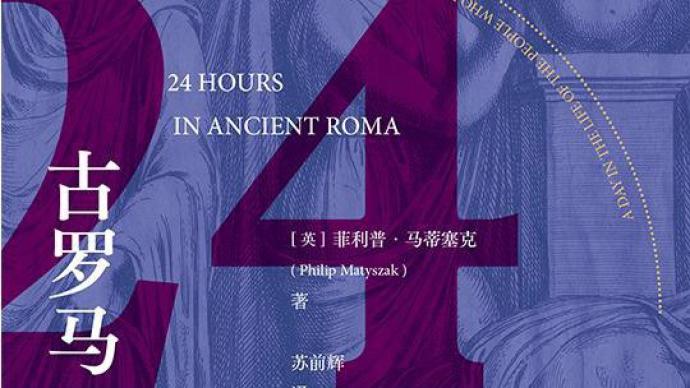
As stated in the famous saying "all roads lead to Rome", Rome seems to be a place of history where the streets are smooth and brightly lit. Rome, the capital and largest city of what is now Italy, was founded in 753 BC (the period of the Western Week), a fantastic and shattered fantasy in the films of Fellini and Paolo Sorrentino.
What we call Rome today has a broader meaning. It refers to the civilization that emerged in the central part of the Italian peninsula. Ancient Rome has experienced three stages: the era of Roman kingship, the Roman Republic, and the Roman Empire. Among them, the Roman Empire, established in 27 BC, was officially split into two parts, east and west in 395. The Western Roman Empire still took Rome as its capital, and the Eastern Roman Empire took Constantinople as its capital, also known as the Byzantine Empire. . In 476, the Western Roman Empire collapsed. Although the Eastern Roman Empire was called the "Roman Empire", it was actually quite different from the ancient Roman period, so it was also called the "Second Rome".
When the Western Roman Empire was overthrown by the barbarians in AD 476, Rome did not disappear, but rose to immortality, embedded in every base of the DNA of Western civilization. Scholar Li Jun wrote in his "Roman History Outline": "The medieval church still insisted on calling itself the Roman Catholic Church, and the medieval empire still stubbornly insisted that it was the heir of the Roman Empire, which Napoleon gave to himself after he became emperor. The only son was crowned King of Rome, and the national buildings in Washington, D.C., the capital of the United States, are all in a neoclassical style that pays tribute to Rome... To understand the West, to understand politics, and to understand the future, Rome cannot be escaped.”
Therefore, today, more than 1,500 years later, Rome has been written. In the following article, we take stock of the recently launched social science books with Rome as the object of writing, and learn about Rome, the "eternal city".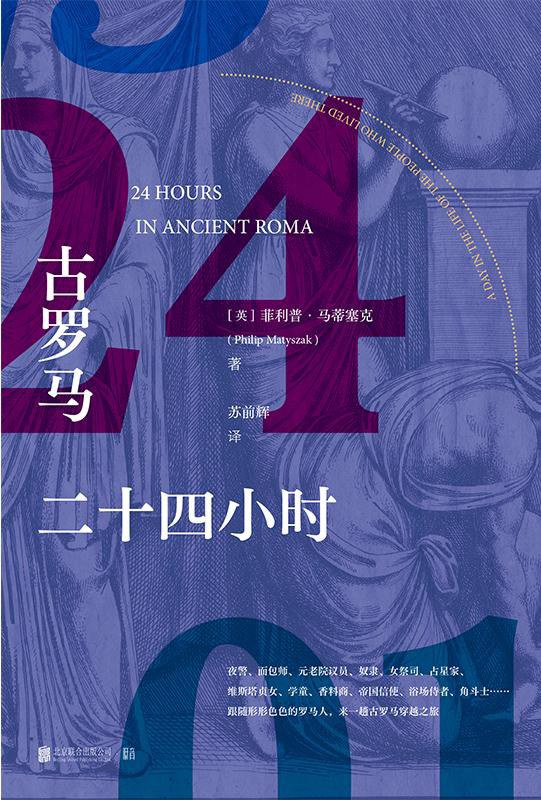 "24 Hours of Ancient Rome": In 137 AD, follow 24 residents of different identities to visit Rome
"24 Hours of Ancient Rome": In 137 AD, follow 24 residents of different identities to visit Rome
During the first hour of the day (07:00-08:00), members pay homage to the benefactor
In the second hour of the day (08:00-09:00) the Vista Virgins fetch water
The third hour of the day (09:00-10:00) Jurist Proposal
In the fourth hour of the day (10:00-11:00), the girl cuts off her boyfriend
In the fifth hour of the day (11:00-12:00) the masons work on the tombs of the emperors
The sixth hour of the day (12:00-13:00) the tavern owner's wife at lunchtime
The seventh hour of the day (13:00-14:00) the water clock maker starts the project
The eighth hour of the day (14:00-15:00) the bath attendant receives customers
...
Welcome to ancient Rome in AD 137, with night watchmen, bakers, senators, slaves, priestesses, astrologers, Vesta virgins, schoolchildren, spice dealers, imperial messengers, bath attendants, gladiators and more Romans spend a day together.
"Twenty-Four Hours of Ancient Rome" written by Dr. Philip Matissek in Roman History, St. John's College, Oxford University, presents the life scenes of residents of different occupations and classes in ancient Rome in the form of stories. 24 hours, 24 stories, each story has a different protagonist, and the lives of these characters intersect with each other, it is a lively sitcom.
We always seem to lack a sense of reality in history. We can tell the major historical events, immortal emperors and precious historical moments in history like a few treasures, but it is always difficult to truly reconstruct the life of people at that time. . Twenty-Four Hours of Ancient Rome is an answer to a specific and nuanced question of life: what time should I choose to enter Rome in order to avoid traffic jams? The astrologer who has insight into the emperor's secrets, what will happen to his own destiny? How do bakers in Rome make bread? How does a washerwoman remove dirt from clothes?
The time chosen in the book is September 137 AD, when Rome was powerful, awe-inspiring and revered. But most of the people the readers of the book will encounter are indifferent. For them, life is not about celebrating imperial glory, but about earning rent, dealing with kinship entanglements, and the daily challenges of family and work.
Rome may have been the greatest city of its time, but the people who lived here still had to travel the streets, get along with their neighbors, and find quality food at a fair price in the markets. And what they worry about most is their livelihood, with bakeries operating nearly 24 hours a day because "no one bakes bread at home these days, especially since a fire in a highly flammable apartment building in Rome is likely to be lynched by angry neighbors. Instead, the poor would send their grains to bakers like Mystratius, who could turn the grains into bread for a fraction of the cost. The daily food ration per household would convert about for two loaves".
At the time, baking was a very good business. The bakers' guild (mandatory membership) was not only highly respected among the merchant class in Rome, but the bakers' own candidates were even represented in the senate. The first mission of this congressman and of all Roman bakers was to keep petitioning the emperor to raise the price of bread. But bread is the staple food of the poor, and if they can't afford it, they make trouble. As a result, the authorities tend to place more emphasis on peace and tranquillity than on the economic well-being of bakers, so bread prices are heavily regulated.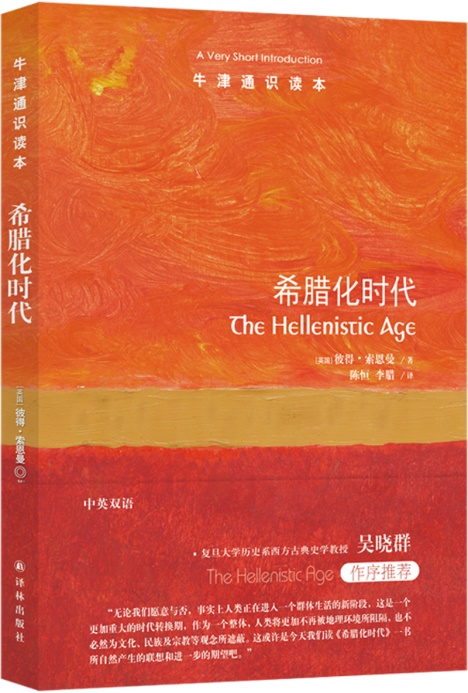 The Hellenistic Age: The Hellenistic Age of Roman Youth
The Hellenistic Age: The Hellenistic Age of Roman Youth
From the death of Alexander the Great (323 BC) to the period of the Roman Empire's conquest of the Ptolemaic Kingdom (30 BC), the language, writing, customs, and political systems of the original civilization in the eastern Mediterranean were gradually influenced by the Greeks. Influenced by civilization, it is called "Hellenic Age" by Western historians. During the more than 300 years of the Hellenistic Age, Rome was in the most exciting period of expansion and the most deplorable period of decline in the "Republic Age", and the young and middle-aged period of Rome was almost always infiltrated by the powerful Greek culture. spent.
During the nearly three hundred years of the Hellenistic era, the various ethnic groups around the Mediterranean Sea adjusted and merged into a new civilization through the exchange of ideas with each other. Some scholars believe that the Hellenistic era was the first era of "globalization" in human history. In the 3rd century BC, you could roam all the way from Rome to India with just one language. From Sicily to Tajikistan, kings grappled with the challenges posed by ruling multi-ethnic states, while Greek city-states came together under the earliest known federal system; Ptolemaic scientists measured the Earth perimeter, while the pioneering Greek Argonauts explored the Indian Ocean and the Atlantic coast of Africa.
Peter Thornman, associate professor of ancient history at Oxford University, presents this three-hundred-year historical picture in "The Hellenistic Age," in which the author begins with the Claircus inscription in Sorey and imagines a little boy named Claircus There was a long trip that started on the coast of Cyprus and ended in Bactria. Around 275 BC, a well-known figure of the Aristotelian school, the philosopher Claircus of Sori did indeed come from Greece to visit the city of Ay Khanum in today's Afghanistan, the only place in the city today. In an excavated Hellenistic Greek city east of the Mesopotamia, he left a passage from the famous Delphic Proverbs on a stone pillar in the tomb of King Kyrias.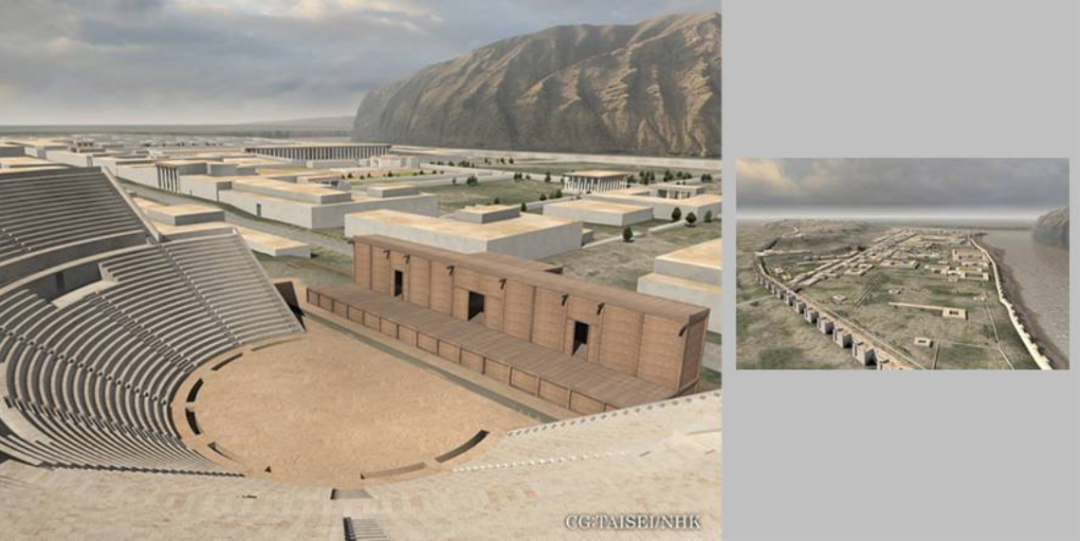
In the main narrative, Thorneman basically takes important characters (including warlords, kings, scholars, etc.) as the main line, and outlines the rich and diverse geographical environment and customs, complex and changeable dynasties and regimes of the Hellenistic era. Replacement, ethnic conflict and integration in the exchange of East and West, integration and interaction of political structure and changes in interests, urban planning and construction, academic achievement and scientific research, book collection and the rise and fall of schools, cultural communication and artistic creation, and people's way of life, etc. Wait.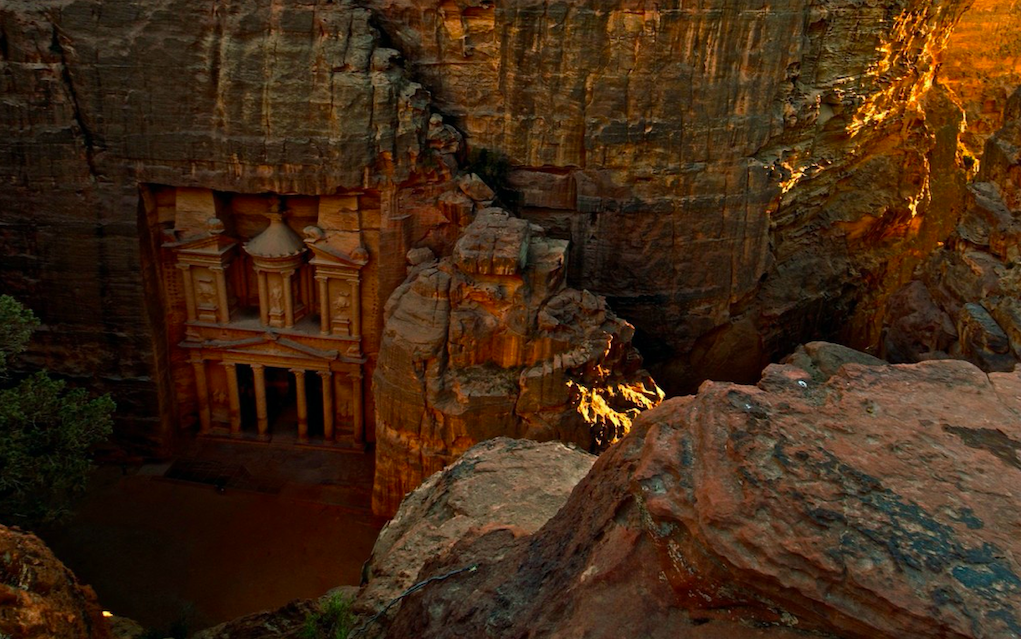
 Byzantium: After the Roman Empire
Byzantium: After the Roman Empire
After the fall of the Western Roman Empire in the 5th century, the Byzantine Empire, one of the economic, cultural and military powers in Europe, lasted for a thousand years. Where did the Byzantine Empire come from, what is the relationship between this empire and the Roman Empire, what are the important characteristics of the Byzantine Empire that lasted for thousands of years, why did the once powerful Byzantine Empire decline later, and what is the historical orientation of Byzantine history and culture? focus of the book.
Under the centuries-long rule of Emperor Constantine and his successors, Constantinople, the imperial capital, developed into a unique fusion of Roman political culture, Greek intellectual tradition and Christian faith. War and the military ran throughout the history of the empire and profoundly affected the empire's politics, economy, religion, culture and urban architecture.
Author Peter Sarris focuses on the inter-imperial wars and the impact of unique political formations on Byzantine politics and culture.
For the thousand-year-old Byzantium, there have always been different opinions. Edward Gibbon's famous historiography, The Decline and Fall of the Roman Empire, called Byzantine history "a tedious, monotonous tale of weakness and agony." Those worthy of history", for Voltaire, Byzantium "was a collection of speeches and miracles of no value ... a disgrace to the human mind" ... It is precisely because of political despotism and religious piety that Byzantium is mentioned above Historians describe it as a prison for intellect and soul. As a result, Byzantine thought and scientific achievements were denied.
If you look at the history of Europe and the Mediterranean after the ancient Roman Empire from a macro perspective, readers will find that this great Roman Empire, which unified the Mediterranean world, left two political models for later generations: one is the Eastern Mediterranean world (including the Mediterranean Sea and the Black Sea). The second is the centralization of the Western Mediterranean and Western Europe. The successor of the former is the unified Byzantine Empire, while the successor of the latter is the war-torn Western Europe. In this narrow test field at the western end of Eurasia, the two "big crowd" governance models have been practiced for more than a thousand years in the Middle Ages, leaving behind a story of constant disputes like the above.
The authors argue that it was precisely because Byzantium was considered a highly religious society that Enlightenment writers and thinkers dismissed it. "But neither critics of the Enlightenment, nor proponents of the Romantic period had a comprehensive understanding of Byzantium. Byzantine culture and society was more complex than they thought. Byzantium was a Christian society, but it was in Here, monks, priests, and secular people outside the church preserved ancient Greek philosophy, literature and ideas. Byzantine culture tends to shy away from innovation, but it incorporates multiple peoples of different origins, so it is bound to give rise to a variety of new literature, art, and architectural styles and styles. Byzantium was also a large economy, retaining the complex characteristics of ancient economies for many centuries. By contrast, in the 5th century, with the demise of the Roman Empire, Western Europe had This complexity is lost. In general, Byzantium is a very special civilization, and no modern nation-state or polity can claim to be descended from it, and no nation can claim to have fully inherited its heritage.”
The centralized emperor despotism of the Byzantine Empire, which was generally denounced, was in fact an inevitable result of the development history from the late Roman Empire to the Byzantine Empire. The "Great Crisis of the 3rd Century AD" dragged the Roman Empire into a chaotic abyss, and the throne continued to change. From 235 to 284, about 26 emperors took turns in the throne. Restoring political order and relatively stable social life is the general desire of the Romans, and the development trend of strengthening the monarchy is highlighted. Consensus and propensity for choice. The empires in the era of Diocletian and Constantine gradually got rid of war, and the centralized system with the autocracy of the Byzantine emperor as the core effectively suspended the political situation of the separatist warlords of the late Roman Empire, and ended the brutal way to seize the supreme power by force. , replacing the custom of military strongmen generally coveting the throne with a principle of hereditary succession by blood. "Roman History": Perspective of the Western Political System from the "Choice of Rome"
"Roman History": Perspective of the Western Political System from the "Choice of Rome"
The subtitle of "The Outline of Roman History" written by Li Yun is "The Rise and Fall of Super-Large Communities". Li Yun outlines the development process of Roman history around this concept. The book analyzes the Roman royal era (753 BC-AD 509 BC), the Republic (509-27 BC) and the Empire (27-476).
Li Jun believes that the core of understanding a great country is political science. If you want to grasp the essentials of the rise and fall of the magnificent politics, the "Roman History Outline" can be used as a training ground for political thinking.
Let's take a look at the most important concepts and institutions that make up today's world: citizens, people, republics, empires, constitutions, heads of state, emperors, separation of powers, dictatorships, legions, governors, provinces, rights, laws... these areas of political science The "must have words" were either invented by the ancient Romans, or reached their ancient perfection in the hands of the Romans. Undoubtedly, to understand Rome, these concepts and the problems involved are also the most important.
Professor Shi Zhan of China Foreign Affairs University said: "Roman history is a treasure trove of human wisdom, and there is great political wisdom horizontally. Under a given situation, the Romans can always find an appropriate structural relationship, settle extremely diverse and complex elements, and form a balanced order; there is a successful vertical evolution of the system. After a specific system goes into decline, the Romans try to patch it up and build a balance again. The Romans have all developed all kinds of institutional arrangements today, and we can see their Applicable Boundaries." Li Jun aims to look at the logic of the entire Western political system and civilization by writing Roman history.
In order to better understand the changes of the times and the system, Li Jun established an "iceberg model of the system" in Chapter 2: the internal structure of the system is like a pyramid. It is divided into three layers: the first layer is the formal system, the second layer is the informal system (customs), and the third layer is the people's feelings (the temperament of the people). The formal system is the rule fixed by the laws of the country; the informal system is the rule that everyone is accustomed to but has not yet been fixed by the law; the public sentiment is the default rule in each of us.
For example, when discussing the most important "Republican era" in Roman history, Li Jun briefly discussed the superiority of the republic system compared to the previous dynasty from the three value levels of publicity, legality and virtue. But he also put forward restraint: "Value must be poured into the system to realize the regulation of people's cognition and behavior, and the value that is implemented in people's hearts and hands is truly alive. Therefore, the system is the key. Any good value must be found. Appropriate and feasible system to achieve. Otherwise, the value is only on paper, it may have noble philosophical significance or aesthetic taste, but its political practicality will be greatly reduced.”
At the same time, he also analyzes it more rationally with the "law of entropy increase" that measures chaos in physics. This law tells us that the entropy inside an isolated system can only increase or remain unchanged, and cannot decrease, and things will always go Chaos is a natural law, and all systems must be adjusted and changed to make the entire system more reasonable, otherwise it will inevitably decline. As a result, we may have mistakenly blamed many emperors of subjugation who have left their infamy throughout the ages. They may just happen to be in a chaotic world where the "entropy" has increased beyond their control.
An Outline of Roman History provides readers with a key to understanding key issues in the West. This key helps readers dissect the rise and prosperity, decline and collapse of the Eternal City in Western civilization, revealing the great logic of the West and politics.
What we call Rome today has a broader meaning. It refers to the civilization that emerged in the central part of the Italian peninsula. Ancient Rome has experienced three stages: the era of Roman kingship, the Roman Republic, and the Roman Empire. Among them, the Roman Empire, established in 27 BC, was officially split into two parts, east and west in 395. The Western Roman Empire still took Rome as its capital, and the Eastern Roman Empire took Constantinople as its capital, also known as the Byzantine Empire. . In 476, the Western Roman Empire collapsed. Although the Eastern Roman Empire was called the "Roman Empire", it was actually quite different from the ancient Roman period, so it was also called the "Second Rome".
When the Western Roman Empire was overthrown by the barbarians in AD 476, Rome did not disappear, but rose to immortality, embedded in every base of the DNA of Western civilization. Scholar Li Jun wrote in his "Roman History Outline": "The medieval church still insisted on calling itself the Roman Catholic Church, and the medieval empire still stubbornly insisted that it was the heir of the Roman Empire, which Napoleon gave to himself after he became emperor. The only son was crowned King of Rome, and the national buildings in Washington, D.C., the capital of the United States, are all in a neoclassical style that pays tribute to Rome... To understand the West, to understand politics, and to understand the future, Rome cannot be escaped.”
Therefore, today, more than 1,500 years later, Rome has been written. In the following article, we take stock of the recently launched social science books with Rome as the object of writing, and learn about Rome, the "eternal city".
 "24 Hours of Ancient Rome": In 137 AD, follow 24 residents of different identities to visit Rome
"24 Hours of Ancient Rome": In 137 AD, follow 24 residents of different identities to visit RomeDuring the first hour of the day (07:00-08:00), members pay homage to the benefactor
In the second hour of the day (08:00-09:00) the Vista Virgins fetch water
The third hour of the day (09:00-10:00) Jurist Proposal
In the fourth hour of the day (10:00-11:00), the girl cuts off her boyfriend
In the fifth hour of the day (11:00-12:00) the masons work on the tombs of the emperors
The sixth hour of the day (12:00-13:00) the tavern owner's wife at lunchtime
The seventh hour of the day (13:00-14:00) the water clock maker starts the project
The eighth hour of the day (14:00-15:00) the bath attendant receives customers
...
Welcome to ancient Rome in AD 137, with night watchmen, bakers, senators, slaves, priestesses, astrologers, Vesta virgins, schoolchildren, spice dealers, imperial messengers, bath attendants, gladiators and more Romans spend a day together.
"Twenty-Four Hours of Ancient Rome" written by Dr. Philip Matissek in Roman History, St. John's College, Oxford University, presents the life scenes of residents of different occupations and classes in ancient Rome in the form of stories. 24 hours, 24 stories, each story has a different protagonist, and the lives of these characters intersect with each other, it is a lively sitcom.
We always seem to lack a sense of reality in history. We can tell the major historical events, immortal emperors and precious historical moments in history like a few treasures, but it is always difficult to truly reconstruct the life of people at that time. . Twenty-Four Hours of Ancient Rome is an answer to a specific and nuanced question of life: what time should I choose to enter Rome in order to avoid traffic jams? The astrologer who has insight into the emperor's secrets, what will happen to his own destiny? How do bakers in Rome make bread? How does a washerwoman remove dirt from clothes?
The time chosen in the book is September 137 AD, when Rome was powerful, awe-inspiring and revered. But most of the people the readers of the book will encounter are indifferent. For them, life is not about celebrating imperial glory, but about earning rent, dealing with kinship entanglements, and the daily challenges of family and work.
Rome may have been the greatest city of its time, but the people who lived here still had to travel the streets, get along with their neighbors, and find quality food at a fair price in the markets. And what they worry about most is their livelihood, with bakeries operating nearly 24 hours a day because "no one bakes bread at home these days, especially since a fire in a highly flammable apartment building in Rome is likely to be lynched by angry neighbors. Instead, the poor would send their grains to bakers like Mystratius, who could turn the grains into bread for a fraction of the cost. The daily food ration per household would convert about for two loaves".
At the time, baking was a very good business. The bakers' guild (mandatory membership) was not only highly respected among the merchant class in Rome, but the bakers' own candidates were even represented in the senate. The first mission of this congressman and of all Roman bakers was to keep petitioning the emperor to raise the price of bread. But bread is the staple food of the poor, and if they can't afford it, they make trouble. As a result, the authorities tend to place more emphasis on peace and tranquillity than on the economic well-being of bakers, so bread prices are heavily regulated.
 The Hellenistic Age: The Hellenistic Age of Roman Youth
The Hellenistic Age: The Hellenistic Age of Roman YouthFrom the death of Alexander the Great (323 BC) to the period of the Roman Empire's conquest of the Ptolemaic Kingdom (30 BC), the language, writing, customs, and political systems of the original civilization in the eastern Mediterranean were gradually influenced by the Greeks. Influenced by civilization, it is called "Hellenic Age" by Western historians. During the more than 300 years of the Hellenistic Age, Rome was in the most exciting period of expansion and the most deplorable period of decline in the "Republic Age", and the young and middle-aged period of Rome was almost always infiltrated by the powerful Greek culture. spent.
During the nearly three hundred years of the Hellenistic era, the various ethnic groups around the Mediterranean Sea adjusted and merged into a new civilization through the exchange of ideas with each other. Some scholars believe that the Hellenistic era was the first era of "globalization" in human history. In the 3rd century BC, you could roam all the way from Rome to India with just one language. From Sicily to Tajikistan, kings grappled with the challenges posed by ruling multi-ethnic states, while Greek city-states came together under the earliest known federal system; Ptolemaic scientists measured the Earth perimeter, while the pioneering Greek Argonauts explored the Indian Ocean and the Atlantic coast of Africa.
Peter Thornman, associate professor of ancient history at Oxford University, presents this three-hundred-year historical picture in "The Hellenistic Age," in which the author begins with the Claircus inscription in Sorey and imagines a little boy named Claircus There was a long trip that started on the coast of Cyprus and ended in Bactria. Around 275 BC, a well-known figure of the Aristotelian school, the philosopher Claircus of Sori did indeed come from Greece to visit the city of Ay Khanum in today's Afghanistan, the only place in the city today. In an excavated Hellenistic Greek city east of the Mesopotamia, he left a passage from the famous Delphic Proverbs on a stone pillar in the tomb of King Kyrias.

ay hanum city
In the main narrative, Thorneman basically takes important characters (including warlords, kings, scholars, etc.) as the main line, and outlines the rich and diverse geographical environment and customs, complex and changeable dynasties and regimes of the Hellenistic era. Replacement, ethnic conflict and integration in the exchange of East and West, integration and interaction of political structure and changes in interests, urban planning and construction, academic achievement and scientific research, book collection and the rise and fall of schools, cultural communication and artistic creation, and people's way of life, etc. Wait.

ancient city of Petra
In addition to written documents, the author also advocates using those fascinating material remains to experience the glorious Hellenistic era - from Greece to Afghanistan, a large number of Hellenistic cities, temples, and fortresses have been excavated, and the most representative cities have been excavated. It's Prin, who is described in detail in Chapter 6 of the book. The awe-inspiring site of Heraclea, located beneath Mount Latmos in southwestern Turkey, has almost completely preserved its entire Hellenistic-era walled ring, along with its accompanying towers, walkways, and guardhouses. The best preserved examples of Hellenistic architecture come from Jordan: the fortress of Qasr el Abd near modern Amman is a small Hellenistic palace, and the ancient city of Petra, the capital of the Nabataean kingdom, gives us an The Baroque cityscape of the late Hellenistic capital is well understood. Byzantium: After the Roman Empire
Byzantium: After the Roman EmpireAfter the fall of the Western Roman Empire in the 5th century, the Byzantine Empire, one of the economic, cultural and military powers in Europe, lasted for a thousand years. Where did the Byzantine Empire come from, what is the relationship between this empire and the Roman Empire, what are the important characteristics of the Byzantine Empire that lasted for thousands of years, why did the once powerful Byzantine Empire decline later, and what is the historical orientation of Byzantine history and culture? focus of the book.
Under the centuries-long rule of Emperor Constantine and his successors, Constantinople, the imperial capital, developed into a unique fusion of Roman political culture, Greek intellectual tradition and Christian faith. War and the military ran throughout the history of the empire and profoundly affected the empire's politics, economy, religion, culture and urban architecture.
Author Peter Sarris focuses on the inter-imperial wars and the impact of unique political formations on Byzantine politics and culture.
For the thousand-year-old Byzantium, there have always been different opinions. Edward Gibbon's famous historiography, The Decline and Fall of the Roman Empire, called Byzantine history "a tedious, monotonous tale of weakness and agony." Those worthy of history", for Voltaire, Byzantium "was a collection of speeches and miracles of no value ... a disgrace to the human mind" ... It is precisely because of political despotism and religious piety that Byzantium is mentioned above Historians describe it as a prison for intellect and soul. As a result, Byzantine thought and scientific achievements were denied.
If you look at the history of Europe and the Mediterranean after the ancient Roman Empire from a macro perspective, readers will find that this great Roman Empire, which unified the Mediterranean world, left two political models for later generations: one is the Eastern Mediterranean world (including the Mediterranean Sea and the Black Sea). The second is the centralization of the Western Mediterranean and Western Europe. The successor of the former is the unified Byzantine Empire, while the successor of the latter is the war-torn Western Europe. In this narrow test field at the western end of Eurasia, the two "big crowd" governance models have been practiced for more than a thousand years in the Middle Ages, leaving behind a story of constant disputes like the above.
The authors argue that it was precisely because Byzantium was considered a highly religious society that Enlightenment writers and thinkers dismissed it. "But neither critics of the Enlightenment, nor proponents of the Romantic period had a comprehensive understanding of Byzantium. Byzantine culture and society was more complex than they thought. Byzantium was a Christian society, but it was in Here, monks, priests, and secular people outside the church preserved ancient Greek philosophy, literature and ideas. Byzantine culture tends to shy away from innovation, but it incorporates multiple peoples of different origins, so it is bound to give rise to a variety of new literature, art, and architectural styles and styles. Byzantium was also a large economy, retaining the complex characteristics of ancient economies for many centuries. By contrast, in the 5th century, with the demise of the Roman Empire, Western Europe had This complexity is lost. In general, Byzantium is a very special civilization, and no modern nation-state or polity can claim to be descended from it, and no nation can claim to have fully inherited its heritage.”
The centralized emperor despotism of the Byzantine Empire, which was generally denounced, was in fact an inevitable result of the development history from the late Roman Empire to the Byzantine Empire. The "Great Crisis of the 3rd Century AD" dragged the Roman Empire into a chaotic abyss, and the throne continued to change. From 235 to 284, about 26 emperors took turns in the throne. Restoring political order and relatively stable social life is the general desire of the Romans, and the development trend of strengthening the monarchy is highlighted. Consensus and propensity for choice. The empires in the era of Diocletian and Constantine gradually got rid of war, and the centralized system with the autocracy of the Byzantine emperor as the core effectively suspended the political situation of the separatist warlords of the late Roman Empire, and ended the brutal way to seize the supreme power by force. , replacing the custom of military strongmen generally coveting the throne with a principle of hereditary succession by blood.
 "Roman History": Perspective of the Western Political System from the "Choice of Rome"
"Roman History": Perspective of the Western Political System from the "Choice of Rome"The subtitle of "The Outline of Roman History" written by Li Yun is "The Rise and Fall of Super-Large Communities". Li Yun outlines the development process of Roman history around this concept. The book analyzes the Roman royal era (753 BC-AD 509 BC), the Republic (509-27 BC) and the Empire (27-476).
Li Jun believes that the core of understanding a great country is political science. If you want to grasp the essentials of the rise and fall of the magnificent politics, the "Roman History Outline" can be used as a training ground for political thinking.
Let's take a look at the most important concepts and institutions that make up today's world: citizens, people, republics, empires, constitutions, heads of state, emperors, separation of powers, dictatorships, legions, governors, provinces, rights, laws... these areas of political science The "must have words" were either invented by the ancient Romans, or reached their ancient perfection in the hands of the Romans. Undoubtedly, to understand Rome, these concepts and the problems involved are also the most important.
Professor Shi Zhan of China Foreign Affairs University said: "Roman history is a treasure trove of human wisdom, and there is great political wisdom horizontally. Under a given situation, the Romans can always find an appropriate structural relationship, settle extremely diverse and complex elements, and form a balanced order; there is a successful vertical evolution of the system. After a specific system goes into decline, the Romans try to patch it up and build a balance again. The Romans have all developed all kinds of institutional arrangements today, and we can see their Applicable Boundaries." Li Jun aims to look at the logic of the entire Western political system and civilization by writing Roman history.
In order to better understand the changes of the times and the system, Li Jun established an "iceberg model of the system" in Chapter 2: the internal structure of the system is like a pyramid. It is divided into three layers: the first layer is the formal system, the second layer is the informal system (customs), and the third layer is the people's feelings (the temperament of the people). The formal system is the rule fixed by the laws of the country; the informal system is the rule that everyone is accustomed to but has not yet been fixed by the law; the public sentiment is the default rule in each of us.
For example, when discussing the most important "Republican era" in Roman history, Li Jun briefly discussed the superiority of the republic system compared to the previous dynasty from the three value levels of publicity, legality and virtue. But he also put forward restraint: "Value must be poured into the system to realize the regulation of people's cognition and behavior, and the value that is implemented in people's hearts and hands is truly alive. Therefore, the system is the key. Any good value must be found. Appropriate and feasible system to achieve. Otherwise, the value is only on paper, it may have noble philosophical significance or aesthetic taste, but its political practicality will be greatly reduced.”
At the same time, he also analyzes it more rationally with the "law of entropy increase" that measures chaos in physics. This law tells us that the entropy inside an isolated system can only increase or remain unchanged, and cannot decrease, and things will always go Chaos is a natural law, and all systems must be adjusted and changed to make the entire system more reasonable, otherwise it will inevitably decline. As a result, we may have mistakenly blamed many emperors of subjugation who have left their infamy throughout the ages. They may just happen to be in a chaotic world where the "entropy" has increased beyond their control.
An Outline of Roman History provides readers with a key to understanding key issues in the West. This key helps readers dissect the rise and prosperity, decline and collapse of the Eternal City in Western civilization, revealing the great logic of the West and politics.
Related Posts